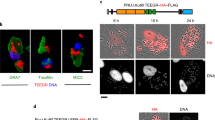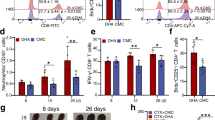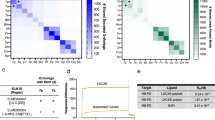Abstract
Endemic Burkitt's lymphoma (BL) is considered to preferentially develop in equatorial Africa because of chronic co-infection with Epstein–Barr virus (EBV) and the malaria pathogen Plasmodium falciparum. The interaction and contribution of both pathogens in the oncogenic process are poorly understood. Earlier, we showed that immune activation with a synthetic Toll-like receptor 9 (TLR9) ligand suppresses the initiation of EBV lytic replication in primary human B cells. In this study we investigate the mechanism involved in the suppression of EBV lytic gene expression in BL cell lines. We show that this suppression is dependent on functional TLR9 and MyD88 signaling but independent of downstream signaling elements, including phosphatidylinositol-3 kinase, mitogen-activated protein kinases and nuclear factor-κB. We identified TLR9 triggering resulting in histone modifications to negatively affect the activation of the promoter of EBV's master regulatory lytic gene BZLF1. Finally, we show that P. falciparum hemozoin, a natural TLR9 ligand, suppresses induction of EBV lytic gene expression in a dose-dependent manner. Thus, we provide evidence for a possible interaction between P. falciparum and EBV at the B-cell level and the mechanism involved in suppressing lytic and thereby reinforcing latent EBV that has unique oncogenic potential.
This is a preview of subscription content, access via your institution
Access options
Subscribe to this journal
Receive 50 print issues and online access
$259.00 per year
only $5.18 per issue
Buy this article
- Purchase on Springer Link
- Instant access to full article PDF
Prices may be subject to local taxes which are calculated during checkout








Similar content being viewed by others
References
Alazard N, Gruffat H, Hiriart E, Sergeant A, Manet E . (2003). Differential hyperacetylation of histones H3 and H4 upon promoter-specific recruitment of EBNA2 in Epstein-Barr virus chromatin. J Virol 77: 8166–8172.
Ashman RF, Goeken JA, Drahos J, Lenert P . (2005). Sequence requirements for oligodeoxyribonucleotide inhibitory activity. Int Immunol 17: 411–420.
Berger C, Day P, Meier G, Zingg W, Bossart W, Nadal D . (2001). Dynamics of Epstein-Barr virus DNA levels in serum during EBV-associated disease. J Med Virol 64: 505–512.
Brown HJ, Song MJ, Deng H, Wu TT, Cheng G, Sun R . (2003). NF-kappaB inhibits gammaherpesvirus lytic replication. J Virol 77: 8532–8540.
Chene A, Donati D, Guerreiro-Cacais AO, Levitsky V, Chen Q, Falk KI et al. (2007). A molecular link between malaria and Epstein-Barr virus reactivation. PLoS Pathog 3: e80.
Coban C, Igari Y, Yagi M, Reimer T, Koyama S, Aoshi T et al. (2009). Immunogenicity of whole-parasite vaccines against Plasmodium falciparum involves malarial hemozoin and host TLR9. Cell Host Microbe 7: 50–61.
Coban C, Ishii KJ, Kawai T, Hemmi H, Sato S, Uematsu S et al. (2005). Toll-like receptor 9 mediates innate immune activation by the malaria pigment hemozoin. J Exp Med 201: 19–25.
Cohen JI . (2000). Epstein-Barr virus infection. N Engl J Med 343: 481–492.
Countryman JK, Gradoville L, Miller G . (2008). Histone hyperacetylation occurs on promoters of lytic cycle regulatory genes in Epstein-Barr virus-infected cell lines which are refractory to disruption of latency by histone deacetylase inhibitors. J Virol 82: 4706–4719.
de Ruijter AJ, van Gennip AH, Caron HN, Kemp S, van Kuilenburg AB . (2003). Histone deacetylases (HDACs): characterization of the classical HDAC family. Biochem J 370: 737–749.
di Renzo L, Altiok A, Klein G, Klein E . (1994). Endogenous TGF-beta contributes to the induction of the EBV lytic cycle in two Burkitt lymphoma cell lines. Int J Cancer 57: 914–919.
Duramad O, Fearon KL, Chang B, Chan JH, Gregorio J, Coffman RL et al. (2005). Inhibitors of TLR-9 act on multiple cell subsets in mouse and man in vitro and prevent death in vivo from systemic inflammation. J Immunol 174: 5193–5200.
Flemington EK, Goldfeld AE, Speck SH . (1991). Efficient transcription of the Epstein-Barr virus immediate-early BZLF1 and BRLF1 genes requires protein synthesis. J Virol 65: 7073–7077.
Foster SL, Hargreaves DC, Medzhitov R . (2007). Gene-specific control of inflammation by TLR-induced chromatin modifications. Nature 447: 972–978.
Heeg K, Dalpke A, Peter M, Zimmermann S . (2008). Structural requirements for uptake and recognition of CpG oligonucleotides. Int J Med Microbiol 298: 33–38.
Hornung V, Rothenfusser S, Britsch S, Krug A, Jahrsdorfer B, Giese T et al. (2002). Quantitative expression of toll-like receptor 1–10 mRNA in cellular subsets of human peripheral blood mononuclear cells and sensitivity to CpG oligodeoxynucleotides. J Immunol 168: 4531–4537.
Ishii KJ, Koyama S, Nakagawa A, Coban C, Akira S . (2008). Host innate immune receptors and beyond: making sense of microbial infections. Cell Host Microbe 3: 352–363.
Iwakiri D, Takada K . (2004). Phosphatidylinositol 3-kinase is a determinant of responsiveness to B cell antigen receptor-mediated Epstein-Barr virus activation. J Immunol 172: 1561–1566.
Jenkins PJ, Binne UK, Farrell PJ . (2000). Histone acetylation and reactivation of Epstein-Barr virus from latency. J Virol 74: 710–720.
Klein E, Kis LL, Klein G . (2007). Epstein-Barr virus infection in humans: from harmless to life endangering virus-lymphocyte interactions. Oncogene 26: 1297–1305.
Krishnegowda G, Hajjar AM, Zhu J, Douglass EJ, Uematsu S, Akira S et al. (2005). Induction of proinflammatory responses in macrophages by the glycosylphosphatidylinositols of Plasmodium falciparum: cell signaling receptors, glycosylphosphatidylinositol (GPI) structural requirement, and regulation of GPI activity. J Biol Chem 280: 8606–8616.
Kumagai Y, Takeuchi O, Akira S . (2008). TLR9 as a key receptor for the recognition of DNA. Adv Drug Deliv Rev 60: 795–804.
Kurosaki T . (1999). Genetic analysis of B cell antigen receptor signaling. Annu Rev Immunol 17: 555–592.
Ladell K, Dorner M, Zauner L, Berger C, Zucol F, Bernasconi M et al. (2007). Immune activation suppresses initiation of lytic Epstein-Barr virus infection. Cell Microbiol 9: 2055–2069.
Luka J, Kallin B, Klein G . (1979). Induction of the Epstein-Barr virus (EBV) cycle in latently infected cells by n-butyrate. Virology 94: 228–231.
Novak EJ, Rabinovitch PS . (1994). Improved sensitivity in flow cytometric intracellular ionized calcium measurement using fluo-3/Fura Red fluorescence ratios. Cytometry 17: 135–141.
Parroche P, Lauw FN, Goutagny N, Latz E, Monks BG, Visintin A et al. (2007). From the cover: malaria hemozoin is immunologically inert but radically enhances innate responses by presenting malaria DNA to Toll-like receptor 9. Proc Natl Acad Sci USA 104: 1919–1924.
Peng SL . (2005). Signaling in B cells via Toll-like receptors. Curr Opin Immunol 17: 230–236.
Rechsteiner MP, Berger C, Weber M, Sigrist JA, Nadal D, Bernasconi M . (2007). Silencing of latent membrane protein 2B reduces susceptibility to activation of lytic Epstein-Barr virus in Burkitt's lymphoma Akata cells. J Gen Virol 88: 1454–1459.
Rechsteiner MP, Berger C, Zauner L, Sigrist JA, Weber M, Longnecker R et al. (2008). Latent membrane protein 2B regulates susceptibility to induction of lytic Epstein-Barr virus infection. J Virol 82: 1739–1747.
Rickinson A, Kieff E . (2007). Epstein-Barr Virus. In: Knipe D, Howley P (eds). Fields Virology, Lippincott Williams & Wilkins: Philadelphia.
Rochford R, Cannon MJ, Moormann AM . (2005). Endemic Burkitt's lymphoma: a polymicrobial disease? Nat Rev Microbiol 3: 182–187.
Ryan JL, Fan H, Swinnen LJ, Schichman SA, Raab-Traub N, Covington M et al. (2004). Epstein-Barr virus (EBV) DNA in plasma is not encapsidated in patients with EBV-related malignancies. Diagn Mol Pathol 13: 61–68.
Sanjuan MA, Rao N, Lai KT, Gu Y, Sun S, Fuchs A et al. (2006). CpG-induced tyrosine phosphorylation occurs via a TLR9-independent mechanism and is required for cytokine secretion. J Cell Biol 172: 1057–1068.
Takada K . (1984). Cross-linking of cell surface immunoglobulins induces Epstein-Barr virus in Burkitt lymphoma lines. Int J Cancer 33: 27–32.
Takeshita F, Gursel I, Ishii KJ, Suzuki K, Gursel M, Klinman DM . (2004). Signal transduction pathways mediated by the interaction of CpG DNA with Toll-like receptor 9. Semin Immunol 16: 17–22.
Tovey MG, Lenoir G, Begon-Lours J . (1978). Activation of latent Epstein-Barr virus by antibody to human IgM. Nature 276: 270–272.
Tsurumi T, Fujita M, Kudoh A . (2005). Latent and lytic Epstein-Barr virus replication strategies. Rev Med Virol 15: 3–15.
Yi AK, Peckham DW, Ashman RF, Krieg AM . (1999). CpG DNA rescues B cells from apoptosis by activating NFkappaB and preventing mitochondrial membrane potential disruption via a chloroquine-sensitive pathway. Int Immunol 11: 2015–2024.
Yuan J, Cahir-McFarland E, Zhao B, Kieff E . (2006). Virus and cell RNAs expressed during Epstein-Barr virus replication. J Virol 80: 2548–2565.
zur Hausen H, O'Neill FJ, Freese UK, Hecker E . (1978). Persisting oncogenic herpesvirus induced by the tumour promotor TPA. Nature 272: 373–375.
Acknowledgements
We thank Jürg Tschopp, Hans-Peter Beck and Sebastian Rusch for providing reagents. This work was supported by grants from the Cancer League of the Canton Zurich, the Swiss National Foundation (no. 310040-114118), Oncosuisse, the Forschungskredit of the University of Zurich (no. 54192002) and UBS donation by a client.
Author information
Authors and Affiliations
Corresponding author
Ethics declarations
Competing interests
The authors declare no conflict of interest.
Rights and permissions
About this article
Cite this article
Zauner, L., Melroe, G., Sigrist, J. et al. TLR9 triggering in Burkitt's lymphoma cell lines suppresses the EBV BZLF1 transcription via histone modification. Oncogene 29, 4588–4598 (2010). https://doi.org/10.1038/onc.2010.203
Received:
Revised:
Accepted:
Published:
Issue Date:
DOI: https://doi.org/10.1038/onc.2010.203
Keywords
This article is cited by
-
Trichloromethane fraction of Incarvillea compacta induces lytic cytotoxicity and apoptosis in Epstein-Barr virus-positive gastric cancer AGS cells
BMC Complementary and Alternative Medicine (2016)
-
TLR9 agonists induced cell death in Burkitt's lymphoma cells is variable and influenced by TLR9 polymorphism
Cell Death & Disease (2012)



